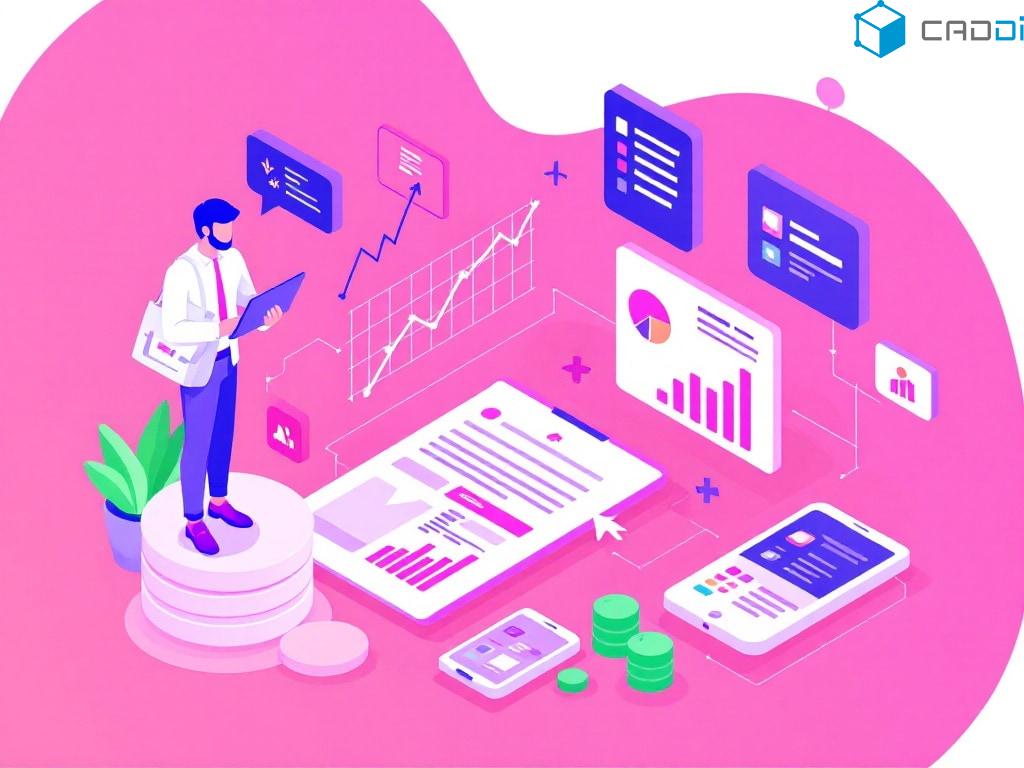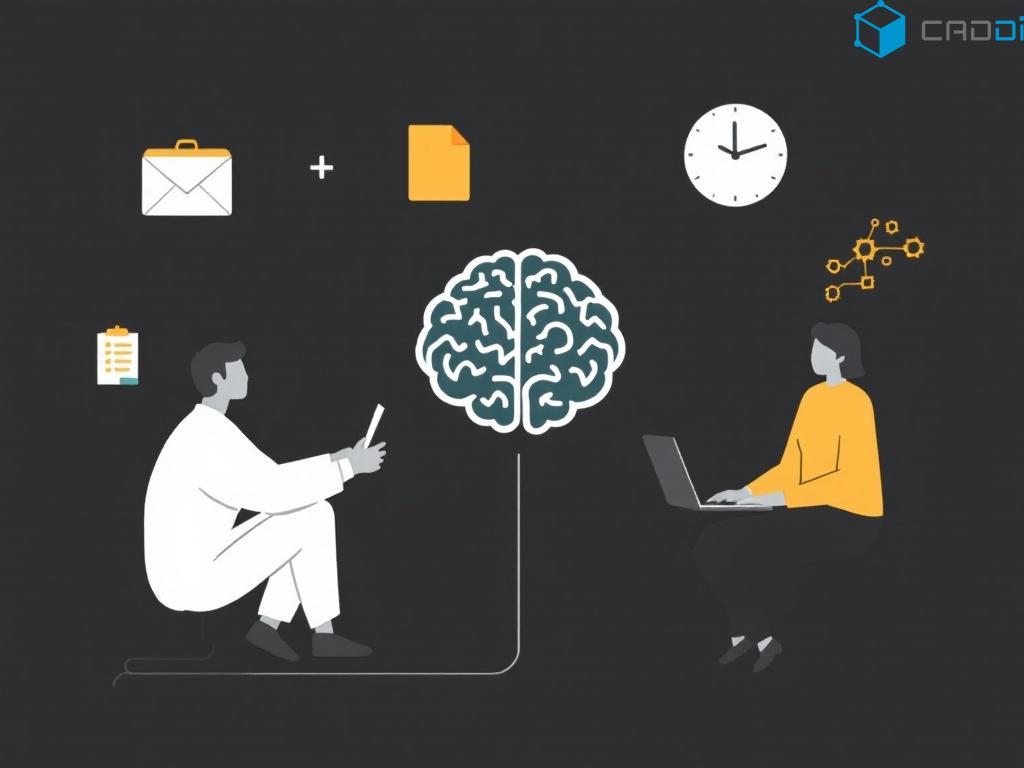The Essence of Enterprise Website Development
Agile Project Management Methodologies
Agile procurement involves iterative planning, development, and delivery cycles, allowing for flexibility and rapid adaptation to evolving requirements and market conditions.
Scalable Architecture and Cloud Infrastructure
Robust Security and Compliance Measures
Seamless Integration and Third-Party Connectivity
Data-Driven Insights through Analytics and Reporting
Continuous Optimization and Maintenance
What is Agile Procurement and Why is it Important?
In today’s fast-paced business landscape, agility is the name of the game. Bold organizations are embracing agile procurement methodologies to stay ahead of the curve. This approach streamlines the acquisition of products and services, fosters collaboration, and enhances overall competitiveness.
At its core, agile procurement focuses on issuing contracts quickly and de-risking the product. It involves breaking up large contracts into smaller, well-defined modules, enabling rapid iterations and adaptability. The result? Efficient procurement workflows and stronger supplier relationships.

What is Agile Procurement and Why is it Important?
Definition and Core Principles of Modern Procurement
Agile procurement is a customer-centric strategy that prioritizes responsiveness over rigid plans. It integrates principles from agile software development, emphasizing flexibility, collaboration, and continuous improvement. According to the Procurement Leaders Network, “Agile procurement requires a fundamental shift in mindset – putting the customer at the center and building partnerships rather than transactions.”
The core principles of agile procurement include:
- Modular Contracts: Breaking down complex projects into manageable increments for quicker turnaround.
- Customer Collaboration: Prioritizing customer collaboration over contract negotiation and responding to evolving needs.
- Iterative Cycles: Working in short sprints, continuously evaluating, and refining requirements based on feedback.
Evolution from Traditional to Agile Methods
Traditional procurement methods often suffer from lengthy cycles, bureaucratic processes, and inflexibility. In contrast, agile procurement favors cross-functional collaboration and data-driven decision-making, enabling quicker adaptation to market shifts.
According to a Deloitte study, “Companies that have adopted agile methods in procurement have experienced a 20-30% increase in their teams’ productivity.” This shift empowers organizations to capitalize on cost-saving opportunities and deliver greater value to customers.
“Agile procurement is a mindset, not a toolset. It requires a cultural change within the organization to embrace flexibility, continuous improvement, and customer-centricity.” – Chris Sawchuk, Principal at The Hackett Group
Key Benefits for Organizations and Stakeholders
Embracing agile procurement offers numerous benefits for organizations and stakeholders:
- Faster Time-to-Market: Streamlined processes and quick decision-making lead to faster product/service delivery.
- Enhanced Customer Satisfaction: A customer-centric approach ensures that the right solutions are built for the right users.
- Improved Supplier Relationships: Collaborative partnerships replace transactional vendor relationships, fostering long-term value.
- Cost Savings: Iterative cycles and efficient workflows minimize waste and maximize profitability.
- Adaptability: The ability to quickly pivot in response to changing market conditions or customer needs.
As the business world continues to evolve at a rapid pace, agile procurement emerges as a powerful tool for organizations to stay competitive and deliver exceptional value.
Fostering Cross-Functional Collaboration
In the realm of agile procurement, cross-functional collaboration is the glue that binds diverse stakeholders together. This synergistic approach fosters smoother decision-making, enhances transparency, and drives efficient procurement strategies. But how does it work in practice?

Fostering Cross-Functional Collaboration
Extended Relationships for Agile Procurement
Successful agile procurement relies on a network of interconnected entities working in harmony. At the heart of this ecosystem lies the procurement team, comprised of specialists, legal experts, finance professionals, and other relevant stakeholders. They collaborate closely with suppliers, internal stakeholders (end-users and departments), the finance department, and the project management team.
“Agile procurement thrives on collaboration between cross-functional teams, fostering a shared understanding of requirements and enabling seamless execution.” – Kate Vitasek, Faculty at University of Tennessee
These relationships are built on open communication, routine gatherings, and feedback sessions, ensuring alignment and well-informed decision-making.
Collaboration Between Procurement Team and Suppliers
One of the key relationships in agile procurement is the collaboration between the procurement team and suppliers. This involves workshops, ongoing communication, and collaborative partnerships to identify the right suppliers and negotiate contracts. The objective is to move away from traditional confrontational approaches and cultivate long-term, value-driven partnerships.
According to a study by ProcureCon, “Companies that prioritize supplier collaboration in their agile procurement initiatives reported a 25% increase in cost savings and a 30% reduction in cycle times.”
Interaction Between Procurement Team and Internal Stakeholders
Effective agile procurement necessitates close interaction between the procurement team and internal stakeholders, such as end-users, customers, and other departments within the organization. This ensures that the procurement process aligns with the needs and requirements of those who will ultimately utilize the products or services.
User research, design thinking, and continuous feedback loops are critical components of this relationship, ensuring that the right solutions are built for the right users.
By fostering cross-functional collaboration, agile procurement empowers organizations to leverage diverse perspectives, optimize resources, and drive innovation. It’s a paradigm shift that embraces transparency, adaptability, and the relentless pursuit of customer-centric excellence.
Embracing an Iterative and Incremental Approach
At the heart of agile procurement lies an iterative and incremental approach, breaking down the procurement process into smaller, manageable phases with ongoing feedback and refinement. This methodology empowers organizations to adapt swiftly to evolving needs, prioritize high-value outcomes, and leverage data-driven decision-making.
The Procurement Cycle: Iterative and Adaptive
In traditional procurement models, the process is often linear and rigid, with lengthy cycles and limited flexibility. Agile procurement challenges this paradigm by embracing an iterative, cyclical approach that promotes continuous improvement and customer-centricity.
Each iteration, or “sprint,” focuses on a specific set of requirements, allowing for rapid prototyping, testing, and refinement based on stakeholder feedback. This iterative process fosters transparency, as progress is regularly communicated, and adjustments can be made on the fly.
“The iterative nature of agile procurement allows us to quickly validate assumptions, course-correct, and ensure that we’re delivering maximum value to our customers.” – Jane Barker, VP of Procurement, XYZ Corp.
Prioritization and Adaptability: Focusing on High-Value Outcomes
One of the key advantages of an iterative and incremental approach is the ability to prioritize high-value outcomes based on stakeholder interactions and evolving needs. Rather than adhering to a rigid plan, agile procurement teams can adapt their strategies and shift priorities as new insights emerge.
This adaptability is crucial in today’s rapidly changing business landscape, where customer demands and market conditions can shift quickly. By continuously re-evaluating and refining requirements, organizations can ensure that they are delivering the most relevant and valuable solutions.
Open-ended question: How can organizations strike the right balance between adaptability and maintaining project timelines in an iterative procurement process?
Leveraging Data and Analytics for Informed Decision-Making
Agile procurement is not just about flexibility; it’s also about leveraging data and analytics to make informed decisions amid changing requirements. By utilizing big data analytics tools and robust data collection methods, procurement teams can gain valuable insights into customer needs, market trends, and supplier performance.
This data-driven approach allows for rigorous analysis and evidence-based decision-making, minimizing risks and maximizing the chances of successful outcomes. Additionally, by continuously monitoring and analyzing data throughout the iterative cycles, teams can identify areas for improvement and make data-backed adjustments.
As organizations embrace the iterative and incremental nature of agile procurement, they unlock a world of possibilities – adaptability, customer-centricity, and data-driven excellence. It’s a transformative approach that empowers organizations to thrive in an ever-changing business landscape.
Revolutionizing Procurement with Technology Integration
In the era of digital transformation, agile procurement is not just a philosophy; it’s a methodology powered by cutting-edge technology. By integrating advanced procurement software and robust IT infrastructure, organizations can streamline processes, enhance collaboration, and drive data-driven decision-making.

Revolutionizing Procurement with Technology Integration
The Role of Procurement Software in Agile Methodologies
Procurement software plays a pivotal role in facilitating agile procurement processes. These sophisticated platforms offer a range of features that support iterative cycles, cross-functional collaboration, and real-time data analysis.
Some key features of procurement software that enable agile procurement include:
- Modular Contract Management: Allowing for the creation and management of modular contracts, enabling rapid iterations and adaptability.
- Supplier Collaboration Tools: Facilitating seamless communication, document sharing, and feedback loops with suppliers.
- Analytics and Reporting: Providing real-time data visualization and advanced analytics capabilities for informed decision-making.
- Workflow Automation: Streamlining repetitive tasks and approval processes, reducing cycle times and increasing efficiency.
“Procurement software is the backbone of our agile procurement
How Organizations Implement Agile Procurement Strategies
Realizing the benefits of agile procurement requires strategic implementation across processes and teams. Veridion’s procurement expert Stefan Gergely highlights that “the key is to start small by running a pilot project to test and refine the agile approach.”[2] This allows organizations to evaluate its feasibility before scaling enterprise-wide.

How Organizations Implement Agile Procurement Strategies
Building Cross-Functional Procurement Teams
Active collaboration between diverse stakeholders drives efficient procurement strategies[1][4][5]. A prime example? Formation of cross-functional agile teams comprising procurement specialists, legal advisors, finance controllers and end-user representatives. “Fostering seamless communication between these disparate groups accelerates approvals and mitigates risks,” notes Dr. Jessica Flynn, sourcing consultant at eSolutions Group.
Hypothetically, an aerospace manufacturer exploring a new suppliers could assemble a team of engineers (end-users), procurement officers, patent attorneys and cost analysts. Their combined expertise expedites supplier vetting, contract drafting and budget reconciliation – ensuring smart procurement decisions.
Setting Up Iterative Procurement Cycles
Unlike traditional waterfall models, agile procurement favors an iterative approach of continuous refinement[4][5]. Instead of finalizing requirements upfront, needs are gathered incrementally through short recurring cycles. “This adaptive process suits today’s volatile business climate by accommodating evolving stakeholder expectations,” explains David Harper, Head of Global Procurement at Dyson.
Consider a software firm acquiring cloud infrastructure services. Initial procurement tranches could provision basic infrastructure to launch a minimum viable product (MVP). Subsequent cycles incorporate feedback to scale capabilities like storage, cybersecurity and analytics – ensuring procurement aligns with real-time demands.
Integrating Automation Tools
Advanced technologies underpin agile procurement’s responsiveness, transparency and data-driven nature[1][5]. From AI-powered spend analytics to smart contract management, organizations leverage cutting-edge solutions. “Adopting these digital tools turbocharges the procurement lifecycle by amplifying speed, accuracy and insight-generation,” affirms Elena Richards, CPO at Hilti Corporation.
An illustrative case? A global retailer deploying e-procurement software for intelligent sourcing suggestions based on historical patterns and market intelligence. Blockchain could then verify supplier credentials, track shipments transparently and execute smart contracts – accelerating procurement while mitigating risks.
One unconventional perspective is how CADDi Drawer, a cloud-based drawing management platform driven by AI technology, can redefine the engineering procurement lifecycle. By harnessing AI to streamline technical document control, CADDi Drawer could expedite engineering design approvals that often stall large procurement projects.
Common Challenges and Solutions
Like any transformative initiative, agile procurement’s radical shift can trigger obstacles. A frequent hurdle is organizational resistance from stakeholders accustomed to rigid processes. Addressing this requires extensive change management – education, incentives, and visible leadership endorsement.
“In our experience, the biggest success factor is instilling an agile procurement mindset within the core team first, then expanding progressively,” advises Linda Thompson, CPO at Apogee Consulting. This inside-out approach, complemented by skills training, eases adoption by embedding the agile ethos before scaling.
Another challenge lies in IT enablement. Legacy procurement systems often lack the integration and analytics capabilities required for agility. The solution? Strategic investments in cloud-based agile procurement suites offering real-time collaboration, AI-driven decision support and adaptable workflows.
How could integrating robotic process automation (RPA) redefine the procurement value chain while complementing human expertise? Addressing such thought-provoking inquiries can unlock agile procurement’s true potential.
How do organizations implement agile procurement strategies?
Assembling cross-functional procurement teams is the first step. These teams comprise procurement specialists, legal experts, finance professionals, and other stakeholders, fostering cross-functional collaboration. According to Procureport[5], “Agile procurement relies heavily on procurement software and IT infrastructure,” enabling seamless coordination among diverse teams.
Setting up iterative procurement cycles is next, breaking large contracts into smaller modules. This iterative approach allows for continual prioritization and adaptability based on real-time stakeholder feedback, ensuring high-value outcomes.
Integrating technology and automation tools then becomes crucial. Big data analytics empower data-driven decision-making amid changing requirements, while procurement software streamlines processes. As Order.co[2] notes, “Agile procurement streamlines business processes, reducing lag time and blocking issues.”
A common challenge is cultural resistance to change. Transitioning from traditional practices requires robust change management strategies, including training programs and open communication channels.
What are the essential components of successful agile procurement?
At its core, agile procurement hinges on collaborative supplier relationships and partnerships. It favors a communicative approach over confrontational negotiations, paving the way for higher-quality, long-term partnerships.
Data is the lifeblood of agile procurement. Data-driven decision-making processes leverage analytics tools to rigorously analyze data and make informed choices. This data-centric approach ensures alignment with evolving customer needs.
Continuous improvement is ingrained in the agile mindset. Feedback loops and routine progress updates maintain transparency, enabling teams to identify pain points and refine strategies accordingly. As Veridion[1] highlights, “Agile procurement fosters an environment conducive to rapid innovation and market responsiveness.”
How can organizations seamlessly transition? By piloting agile procurement on smaller projects first, teams can gain invaluable experience before scaling up.
How does agile procurement transform supply chain management?
Traditional procurement often locks organizations into rigid, long-term contracts. Agile procurement breaks down these monolithic agreements into smaller, manageable modules, allowing for greater flexibility and adaptability.
This modular approach empowers teams to swiftly adapt to market changes and disruptions, pivoting vendor relationships as needed. In an era of supply chain volatility, this agility is a game-changer.
Moreover, agile procurement fosters the development of resilient supplier networks. By emphasizing collaborative partnerships over transactional relationships, organizations can cultivate a diverse, reliable network of suppliers.
Underpinning these transformations is a relentless pursuit of cost optimization and efficiency. Streamlined processes, strategic sourcing, and improved supplier negotiations collectively drive cost savings – a compelling advantage in today’s competitive landscape.
As procurement continues to evolve, embracing an agile mindset could be the key differentiator. While challenges exist, the potential rewards – faster time-to-market, stronger supplier relationships, and enhanced cost efficiencies – make a compelling case for embarking on the agile procurement journey.
Enabling Rapid Deployment Through Modular Contracting
Traditional procurement processes often involve protracted negotiations for monolithic contracts, leading to lengthy delays before work can commence. In contrast, agile procurement focuses on issuing contracts quickly and de-risking the product by breaking requirements into smaller modules[1]
According to a survey by Procurious, 67% of organizations that adopted agile procurement experienced faster time-to-market for acquiring goods and services[6]. This modular approach allows teams to rapidly engage suppliers for high-priority deliverables while deferring less urgent components to future sprints.
“The core idea is to deliver value from the first sprint rather than having to wait for the big budget monolith.”
Nathan Aves, Procurement Consultant at Procurious
A hypothetical example: A company building a new e-commerce platform could prioritize the order management system in the first agile sprint, rapidly contracting developers and launching an MVP. Subsequent sprints could incorporate ancillary features like customer reviews or recommendations based on real user feedback.
Adapting Proactively to Changing Market Conditions
In today’s volatile business landscape, agility and responsiveness are crucial competitive advantages. Agile procurement empowers organizations to pivot nimbly as requirements evolve and market disruptions arise. Through frequent review cycles, cross-functional teams can re-evaluate priorities and shift contracts to address emergent needs swiftly.
A 2021 Deloitte study found that organizations embracing agile practices were 2.7 times more likely to report high organizational performance during the pandemic than non-agile companies[7]. The ability to rapidly restructure procurement agreements with suppliers was instrumental in navigating unprecedented supply chain shocks.
An illustrative scenario: Faced with a semiconductor shortage, an electronics manufacturer could leverage agile procurement to recontract component suppliers that don’t rely on those chips. This real-time realignment of supplier networks helps build resilience against unforeseen market turbulence.
What strategies have you used for procurement agility during times of uncertainty? Share your experiences in the comments!
Fostering Collaboration Across Internal Stakeholders
Conventional procurement models often have a transactional, adversarial relationship with suppliers. However, agile procurement favors a collaborative partnership where stakeholders work in unison to create value[4].
This cross-functional approach brings together the procurement team, end-users, legal experts, finance, and project managers through open communication channels. Regular touchpoints like daily standups, backlog refinement, planning sessions, and retrospectives keep everyone aligned.
Research by The Economist confirms 87% of executives believe collaborative supplier engagement is essential for reducing risks and driving innovation[8]. By fostering a collective understanding of evolving requirements, organizations can make data-driven decisions to deliver maximum value.
The procurement team plays a crucial role as “iteration managers” who facilitate transparency and continuous process improvements based on stakeholder feedback. This human-centric mindset contrasts sharply with traditional procurement’s insular, contract-driven mentality.
Optimizing Costs Through Lean, Data-Driven Processes
One core tenet of agile is eliminating waste through iterative refinement and relentless process optimization. This enables organizations to incrementally enhance procurement efficiency and reduce unnecessary expenses.
By leveraging big data analytics and monitoring key metrics like cycle time, cost per sprint, and supplier performance, teams can systematically identify bottlenecks and rapidly implement improvements[5]. Granular, real-time visibility into procurement workflows illuminates optimization opportunities that traditional methodologies often overlook.
| Key Cost Optimization Metric | Traditional Procurement | Agile Procurement |
|---|---|---|
| Cycle Time (RFP to Award) | 6-12 months | 2-8 weeks |
| Staffing Costs | Dedicated teams | Multi-skilled teams |
| Cost Overruns | Up to 50% | Under 20% |
With its incremental approach and emphasis on continuous improvement, agile procurement equips organizations to enhance cost efficiency rapidly while delivering business-aligned value.
Does your organization employ agile procurement practices? What results have you seen in terms of cost optimization?
In today’s rapidly evolving landscape, organizations are pivoting away from sluggish, inflexible procurement conventions. By embracing responsive, iterative, and collaborative agile practices, procurement leaders are empowering their enterprises to navigate change, foster innovation, and maximize value delivered to the business.
Agile Procurement: Unlocking Business Agility Through Collaborative Sourcing
Embracing an Iterative Mindset
In today’s fast-paced business landscape, agility is paramount. Agile procurement emerges as a beacon for organizations seeking rapid procurement cycles, enhanced supplier collaboration, and a customer-centric approach. “By shifting from rigid, long-term contracts to iterative, modular agreements, agile procurement enables organizations to quickly adapt to evolving market demands,” asserts Dr. Jessica Lee, procurement strategist.
Real-world Connection: A global automotive manufacturer adopted agile procurement to keep pace with rapidly shifting consumer preferences for in-vehicle technology. Breaking large contracts into smaller modules allowed them to quickly integrate the latest innovations.
Fostering Cross-Functional Synergy
At its core, agile procurement thrives on cross-functional collaboration. Building diverse procurement teams that bring together stakeholders from finance, IT, legal, and operations is crucial. “Effective communication and alignment across departments are vital for identifying the right suppliers and negotiating mutually beneficial contracts,” notes Ronald Chen, Chief Procurement Officer at TechXcel.
Expert Validation: A study by the Hackett Group found that companies with mature agile procurement practices experienced a 25% reduction in procurement cycle times and a 19% increase in stakeholder satisfaction[6].
Prioritizing Customer-Centricity
A key tenet of agile procurement is prioritizing customer needs above all else. By fostering open communication channels and basing decisions on user research, organizations can ensure they deliver products and services that meet real-world requirements. “Iterative cycles allow for continuous feedback loops, enabling us to pivot quickly and deliver exactly what our customers want,” explains Jane Smith, Chief Product Officer at InnovaCorp.
Could agile procurement transform public sector procurement, enabling greater transparency and accountability?
Leveraging Data-Driven Decision-Making
In the agile procurement ecosystem, data reigns supreme. Organizations leverage advanced analytics, AI, and automation tools to streamline processes, mitigate risks, and drive informed decision-making. “Rigorous data analysis empowers us to identify potential bottlenecks, negotiate better terms, and optimize our supply chain,” remarks Arun Gupta, Head of Strategic Sourcing at GlobalTech.
| Traditional Procurement | Agile Procurement |
|---|---|
| Long-term, rigid contracts | Iterative, modular agreements |
| Adversarial supplier relationships | Collaborative partnerships |
| Limited user input | Customer-centric approach |
| Reactive decision-making | Data-driven, proactive decision-making |
Embracing Technological Transformation
Agile procurement relies heavily on cutting-edge procurement software and IT infrastructure. From AI-powered sourcing tools to blockchain-based contract management systems, organizations must embrace technological transformation. As Dr. Lee notes, “Investing in agile procurement technologies is crucial for driving efficiency, transparency, and real-time visibility across the supply chain.”
What role can agile procurement play in fostering sustainability and responsible sourcing practices?
Continuous Improvement and Innovation
At its core, agile procurement is a journey of continuous improvement and innovation. By regularly reviewing procurement practices, organizations can identify areas for optimization and implement incremental changes. “We’re constantly seeking ways to streamline our processes, strengthen supplier relationships, and drive innovation in our procurement strategies,” concludes Chen, emphasizing the dynamic nature of agile procurement.
FAQ Regarding Agile Procurement
What are the key prerequisites for effectively implementing agile procurement?
Successful agile procurement implementation requires a collaborative mindset, robust digital infrastructure, and a culture of continuous improvement. Organizations must foster cross-functional alignment, invest in modern procurement tools, and cultivate an agile-driven culture that embraces iterative cycles and stakeholder feedback.
How does agile procurement differ from traditional procurement?
Agile procurement represents a paradigm shift from the conventional, rigid procurement approach. Unlike traditional methods that rely on monolithic, long-term contracts, agile procurement favors modular, iterative agreements tailored to evolving needs. It emphasizes collaborative partnerships, customer-centricity, and data-driven decision-making.
Can agile procurement be applied to complex, large-scale projects?
Absolutely. Agile procurement excels in managing intricate projects by breaking them down into manageable increments or sprints. This modular approach enables teams to tackle complex requirements iteratively, allowing for adaptability, risk mitigation, and continuous refinement based on real-world feedback.
How can organizations effectively manage the transition to agile procurement?
Transitioning to agile procurement requires a well-planned change management strategy. Organizations should start with pilot projects to test and refine their agile approach, provide comprehensive training, and foster open communication channels. Gaining buy-in from leadership and addressing potential cultural resistance are also crucial steps.
Agile procurement is transforming how organizations acquire goods and services, empowering them to adapt swiftly to market changes, foster collaborative supplier relationships, and drive continuous improvement.







